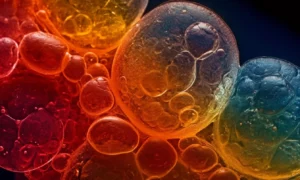Suffering from a sports injury can be devastating to athletes and leave them feeling discouraged and defeated. Dr. Michael Klassen MD understands the emotional toll a sports injury can take on athletes and has developed a process to help individuals heal from their injuries. A graduate of the prestigious UCLA David Geffen School of Medicine, Dr. Klassen has dedicated over two decades to working with athletes to help them return to the sports they love.
Dr. Klassen believes that healing from a sports injury is comprised of three components, each of which must be addressed in order for an individual to achieve a full recovery. The first component is rest and relaxation, which involves taking time off from practice or competition to allow the body to recover. The second component is physical therapy, which helps to increase strength in weakened areas of the body, as well as flexibility and range of motion. Lastly, diet and nutrition play an important role in recovery, as proper nutrition helps to provide the body with the energy and nutrients it needs to heal.
Rest and Relaxation
By far, one of the best, and most common, methods to heal from a sports injury is rest and relaxation. Taking enough time off from practice or competitions allows the body to heal itself naturally and can prevent any further damage. Studies have shown that even a two day break every six weeks can help prevent injuries. But, what about those with existing sports injuries?
Rest plays a vital role in the healing process, as it helps the body repair itself and prevent re-injury. It’s important to take enough time off from practice or competition to ensure that the injury is fully healed before returning to play.
During the rest period, your body will use your energy reserves to heal anything from tiny muscle fiber tears (hence rest periods for bodybuilders) to larger injuries. In addition to rest, you can combine rest with the RICE method, which includes:
- Resting: Don’t put any pressure on the injured area and give it time to heal.
- Ice: Apply an ice pack for 15 minutes for up to 3 times a day, depending on the injury.
- Compression: Use a bandage or wrap to provide light compression around the part of your body that is hurt.
- Elevation: Keep the injured body part elevated above your heart to reduce swelling.
By using the combination of rest and RICE, you can make sure that your injury is given a chance to heal properly before returning to activity.
Physical Therapy and Exercise
In addition to rest and relaxation, physical therapy and exercise plays an important role in healing from sports injuries. However, Dr. Klassen understands that it isn’t enough to simply conduct physical therapy and exercise separately. Communication and coordination between physical therapists and athletes can help ensure that the healing process is efficient and effective.
Physical therapy helps to increase strength in weakened areas, as well as flexibility and range of motion. It also helps to reduce pain and swelling associated with an injury. Dr. Klassen believes that it’s important for physical therapists to work closely with athletes to ensure that the exercises used are appropriate and tailored to the individual’s needs.
Some exercises that can benefit sports injury sufferers include:
- Core strengthening: This helps to reduce the risk of injury.
- Stretching: Stretching can help to improve flexibility and range of motion.
- Balance exercises: Balance exercises help athletes maintain balance and coordination while playing sport.
By finding the right balance and ensuring your providers are coordinating with each other, you can make sure that your physical therapy and exercise program is tailored to your individual needs.
Nutrition and Diet
Nutrition and diet also play an important role in sports injury recovery. Eating a balanced diet can help the body heal more quickly by providing it with the necessary energy and nutrients to repair damaged tissues. Studies have shown that, for athletes, adequate intakes of carbs and protein can help mitigate the effects of future muscle atrophy and help in the healing process.
Proteins: Protein helps to repair and rebuild damaged muscles, tendons, and ligaments.
- Carbohydrates: Carbohydrates help to provide the energy needed for healing, and can come from whole grains for a more well-rounded diet.
- Fats: Fats also play an important role in providing energy and protecting organs from damage. Omega-3 fatty acids, in particular, can help reduce inflammation, which can help speed up the healing process.
Dr. Klassen recommends that athletes eat a balanced diet with an adequate intake of protein, carbohydrates, and fats to ensure optimal healing from sports injuries. In addition, incorporate vitamins and minerals into your diet to ensure you are receiving all the necessary nutrients for healing.
The Bottom Line
By following Dr. Klassen’s advice, athletes can make sure that they are giving their bodies the best chance of recovering from a sports injury, so they can get back to doing what they love most—playing out on the field! Dr. Klassen is here to provide sports injury recovery services so you can reduce your risk of reinjury and recover fast.
To learn more about Dr. Michael Klassen MD, please visit his website at https://www.michaelklassenmd.com/



































